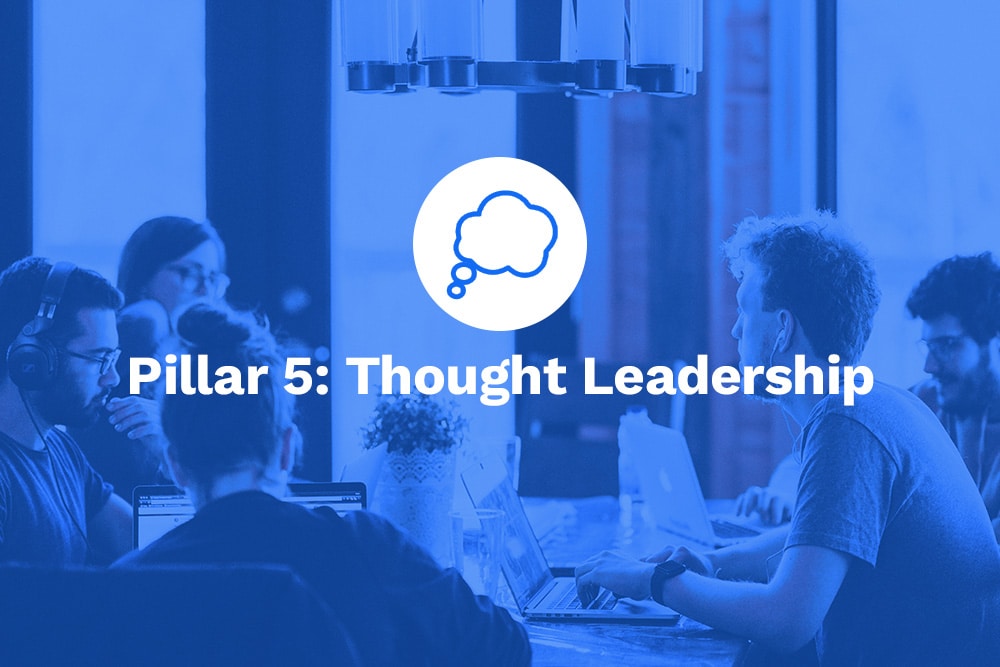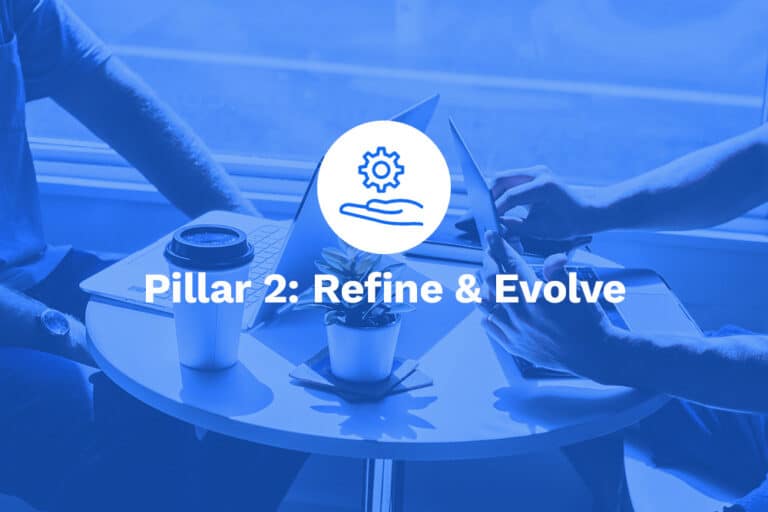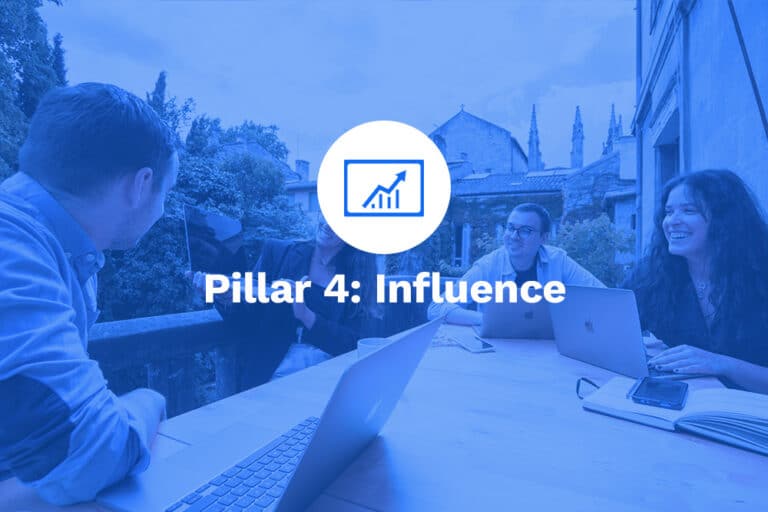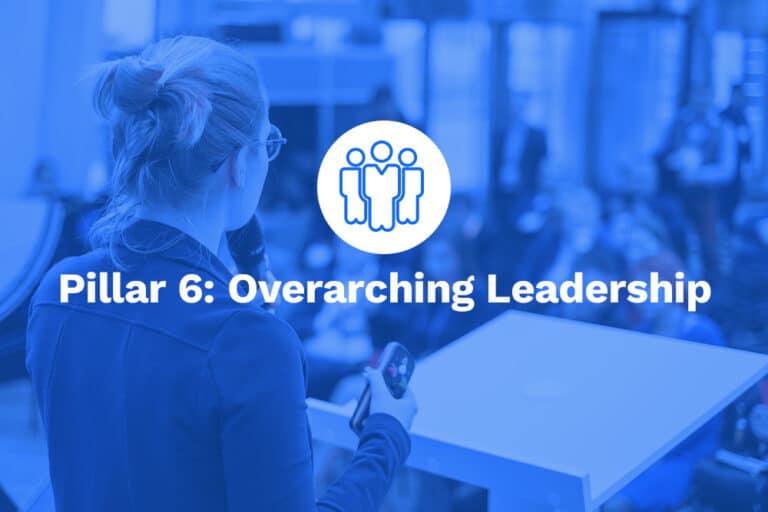Pillar 5 – Thought Leadership: Strategic Thinking
Competency Overview
Strategic Thinking is the secret sauce that turns good leaders into great ones. At Leader Loop, we emphasize that if you’re not thinking ahead, you’re falling behind. Strategic Thinking involves developing effective processes, systems, and tools to achieve business objectives, understanding the impact of present decisions on future states, consistently adjusting current processes to preserve long-term quality, and solving for broad objectives rather than just short-term results. This competency is essential for driving long-term success and innovation.
Leveling Up
Mastering Strategic Thinking sets you apart as a leader who can see the bigger picture and guide your team and organization towards long-term success. This competency helps you develop effective strategies, anticipate future challenges and opportunities, and ensure that your decisions today set you up for success tomorrow. Developing these skills can significantly boost your career, as organizations highly value leaders who can think strategically and drive sustainable growth.
Why It Matters
- Effective Processes and Systems: Developing effective processes, systems, and tools ensures that you can achieve business objectives efficiently and effectively.
- Future Impact Awareness: Understanding the impact of present decisions on future states ensures that you can make informed choices that benefit the organization in the long run.
- Quality Preservation: Consistently adjusting current processes to preserve long-term quality ensures that your team and organization maintain high standards over time.
- Broad Objective Solutions: Solving for broad objectives and results rather than just short-term gains ensures sustainable success and growth.
Competency in Action
- Develop Effective Processes, Systems, Tools to Achieve Business Objectives
- Common Pitfalls to Avoid: Failing to develop robust processes, relying on outdated systems, and not leveraging the right tools can hinder efficiency and effectiveness.
- Benefits: Developing effective processes, systems, and tools ensures that you can achieve business objectives efficiently and drive organizational success.
- Understand the Impact of Present-Moment Decisions to Future States
- Common Pitfalls to Avoid: Making decisions without considering long-term impacts, focusing solely on immediate gains, and not anticipating future challenges can lead to suboptimal outcomes.
- Benefits: Understanding the impact of present decisions on future states ensures that your choices today set you up for success tomorrow.
- Consistently Optimizes Current Process to Preserve Quality Long Term
- Common Pitfalls to Avoid: Sticking to outdated processes, resisting change, and not prioritizing long-term quality can compromise standards and performance.
- Benefits: Consistently adjusting current processes ensures that your team and organization maintain high standards and quality over time.
- Solve for Broad Objectives and Results, Not Just One Dimensional Short Term
- Common Pitfalls to Avoid: Focusing solely on short-term gains, neglecting broader objectives, and not considering the bigger picture can limit long-term success.
- Benefits: Solving for broad objectives ensures sustainable success and growth, driving long-term value for the organization.
How to Enhance This Competency
- Develop Long-Term Plans: Create and implement long-term plans that align with the organization’s strategic objectives.
- Actionable Tip: Use strategic planning tools such as SWOT analysis (Strengths, Weaknesses, Opportunities, Threats) to develop comprehensive long-term plans.
- Stay Informed: Continuously monitor industry trends and future forecasts to anticipate challenges and opportunities.
- Actionable Tip: Subscribe to industry reports and attend conferences to stay updated on the latest trends and insights.
- Implement Effective Systems: Develop and implement effective systems and tools to streamline processes and achieve business objectives.
- Actionable Tip: Use project management software and other tools to improve efficiency and track progress towards goals.
- Evaluate Long-Term Impact: Regularly evaluate the long-term impact of your decisions and adjust strategies as needed.
- Actionable Tip: Conduct periodic reviews of your decisions and their outcomes to ensure alignment with long-term objectives.
- Focus on Quality: Prioritize long-term quality by consistently adjusting processes and systems to maintain high standards.
- Actionable Tip: Implement continuous improvement initiatives to regularly assess and enhance process quality.
Unlocking Potential
- Enhanced Strategic Leadership: Mastering Strategic Thinking enhances your ability to guide your team and organization toward long-term success.
- Career Growth: Strong strategic thinking skills are highly valued by organizations and can lead to career advancement and leadership opportunities.
- Sustainable Success: Developing effective processes and systems, anticipating future challenges, and solving for broad objectives ensure sustainable success and growth.
- Quality Maintenance: Consistently adjusting processes to preserve long-term quality ensures that your team and organization maintain high standards over time.
By developing and honing the competency of Strategic Thinking, you ensure that you can anticipate future challenges, develop effective strategies, and drive sustainable success. This skill is essential for succeeding in a Leadership role.
About Leader Loop: Leader Loop crafts actionable, competency-focused articles to accelerate your career growth. Our expert-written content provides practical strategies for leadership, team management, and professional development. Whether you’re a seasoned manager or an ambitious individual contributor, our articles deliver the insights you need to excel in today’s workplace.




